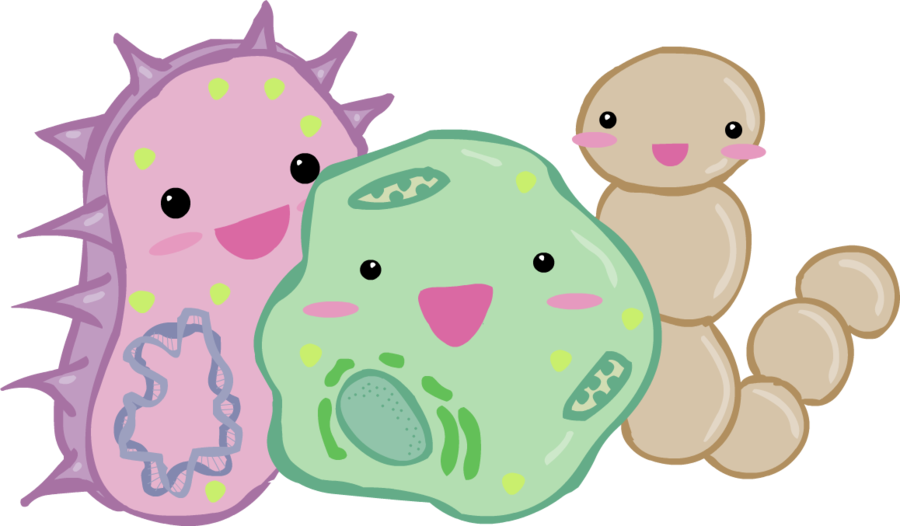Now that we've almost finished introducing physical anthropology, it is a good time to remember how small the effect of our biology is on who we are. Yes, I'm telling you that everything you've learned up to now about the biological origins of humanity is mostly insignificant. Most research into human behavior finds biology as a almost insignificant causal factor compared to culture. We didn't evolve to be who we are, as much as we learned to be who we are. Most of who we are is determined by how we grow up: what language we speak, our religion, our favorite flavor of ice cream, our views on existentialism, what we laugh about, what we cry about.
We can accept that we are both: that biology got us most of way in the past, but by now culture has mostly taken over. The holistic approach of anthropology lets us avoid extreme views of cultural determinism or biological determinism, and we can hold seemingly contradictory views, such as bio-cultural evolution. Anthropology's skepticism of unicausal explanations makes it reluctant to force a broad unifying theory on situations where there are too many counter examples.
Biologically analogies of culture are often misused. Recapitulation theory ("ontogeny recapitulates phylogeny") notices that human fetuses have proto gill slits, but that doesn't make us fish, and the analogy breaks down even more when applied neurology or art criticism. Social Darwinism says that poor people deserve to die because they're not fit for society, and Darwin never said or implied this. The theory of Mimetics claims that internet memes follow the same principals of Natural Selection that genes do, but they don't. They don't reproduce in the same way, they don't have introns and exons, and the way they changes is more like what Lamarck described than Darwin. Have you ever heard that expression that people use to talk about how much they like a certain sports team that “it's part of our DNA”? I'd like to say that people who use that phrase are genetically stupid, but the research fails to show causation between genetics and IQ at this level. It's not in their DNA. It's in their brain. They learned it. These are examples of a general tendency to abuse biological principles and try to apply them metaphorically to cultural situations, and a kind of logical fallacy often known as a weak analogy; trying to compare apples and oranges.
As we have seen in previous sections on human variation, culture is more important than biology. Whether you get an infectious disease depends mostly on your access to clean water. Your 23rd chromosomes do NOT determine your gender; it's about your clothes, and what pronouns you use. Biological human races do NOT exist, but many cultures reify them as folk taxonomies.
Most anthropology programs separate physical (biological) anthropology from cultural anthropology because the methods and the data tend to be different, but the goal is the same. The holistic approach of anthropology is good at balancing these multiple causal factors of nature versus nurture, biology versus culture. Other branches of science do this as well, such as in behavioral ecology.
Exercise \(\PageIndex{1}\)
- Go back and review the epigenetics section.
- Read a good review: "Culture Is Essential" the first chapter of Not By Genes Alone: How Culture Transformed Human Evolution, by Peter J. Richerson and Robert Boyd, 2005.
Class
How much money your family has effect you biologically. Your DNA directs your cells to produce proteins to maintain normal functions, but if you lack the energy and building blocks to produce the proteins, there is no way to reach your genetic potential. The human body has an amazing plastic to survive starvation, and this is a testament to evolutionary forces acting on our ancestors. The most significant stressors on the human body have to do with class: malnutrition, lack of clean water, exposure to harsh weather, exposure to pollution.
Notes
Stress can permanently effect your DNA
Cesarean delivery may provoke methylation that changes the genetics of a baby
Intersectionality
The intersection between biological and cultural identities can a cumulative effect.
* Traumatic stress changes brains of boys, girls differently
Art
Much of what we think is beautiful is determined by genetic factors that can be explained through natural selection and our evolution. The kawaii (cuteness) of manga and anime that elicits that sigh of "ahhh", happens because of our nurturing instinct towards neotony.

Figure \(\PageIndex{1}\) - Bacteria by pngimg.com (CC BY-NC)
The presence of trees in beautiful landscapes, both in paintings and gardens, happens because the arboreal past that we share with primates triggers some set of neurons that were determined by genes to makes us feel good.
These pathways from gene to neuron to behavior are very difficult to trace, and this makes for exciting research in the years to come.
Notes
Denis Dutton article on Evolutionary Aesthetics
Creativity in Human Evolution and Prehistory, an edited book with several good articles
Evolutionary Approaches to Creativity
Sexy Handaxes
Music
Music is a good example of a complex response to the nature vs nurture question. What kind of music you like is determined by the culture you grow up with. The fact that every culture around the world has music suggests that humans are biologically determined to be musical.
An overview on *singing and human evolution.
Cyborgs
Popular culture thinks of cyborgs as the extreme half-robot, half-human, but thinking about human dependence on culture to augment their physical bodies, we can see that the human cyborg is not science fiction, but part of a continuum that spans our primate tool-using ancestors to the amazing interfaces of today. Human evolution, cultural progression, and the history of technology can be thought of not as some line we've crossed between "natural" and "machine" but just a question of degree, how sophisticated are the tools.
Humans use their bodies to modify the natural world, as we saw in the art of the Paleolithic revolution, but humans also use the natural world to modify their bodies. The Bafia of Cameroon believe that without scarification they are no better than monkeys or pigs (Pitt-River's Museum, Body Art). Modification sets us apart from other animals.
Notes
Brain machine interface
Donna J. Haraway Simians, Cyborgs, and Women: The Reinvention of Nature 1989
Terraforming
Homo sapiens have transformed Earth to meet their culture needs. Since prehistoric times, our subsistence practices have changed ecosystems on a planetary scale: industrialism, deforestation, agriculture, domestication.
* 33,000 years of Man's best friend in southern East Asia



